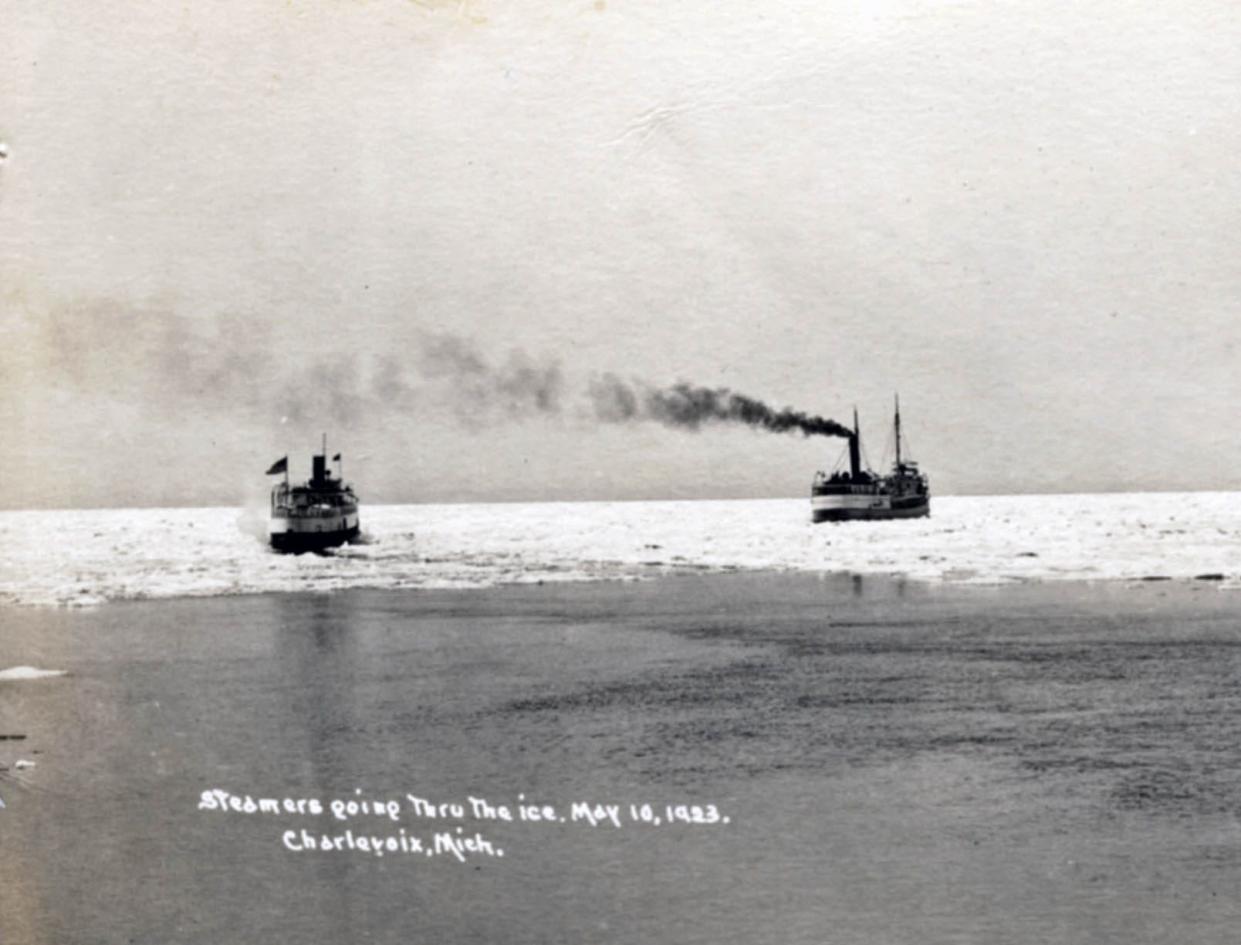Looking Back: Charlevoix's patience rewarded with a railroad

CHARLEVOIX — One hundred fifty years ago, on May 17, 1873, Charlevoix Sentinel editor Willard A. Smith reported that “Every boat brings numbers of new settlers for the unoccupied territory in the eastern part of our county.”
This was certainly true. Word had gotten out nationwide about what had become available after the federal government opened up so much land for farming and settlement. Thousands of veterans of the Civil War had returned home to find not much opportunity to occupy their hands and minds, and began to heed the advertising for greener pastures that upper Michigan had to offer. The arrival later that year of the Grand Rapids & Indiana Railroad from the south, that would come through Boyne Falls and Petoskey to Mackinac, would allow even faster access to these lands. The Tip of the Mitt was about to experience a population-thus-development explosion. Bear River, now Petoskey, would soon overtake Pine River (Charlevoix) in its growth, with an eventual 400-plus cottages alone in its resort subdivision called Bay View.
That same week, one could get one’s teeth fixed! Or maybe just painfully pulled. “Dental.—Dr. L. Wright, of Yuba (39 miles south of Charlevoix on U.S. 31), an experienced dentist, informs us that he will be in town during the coming week, to do all the work in that line with which he may be favored.” Hard to imagine what exactly that experience would be like.
Willard Smith also devoted over a full length column to the importance of the railroad coming to this region. “The close observer of human events cannot have failed to notice that they are the means of Providence for the rapid advancement of civilization . . . and this local link (the Boyne Falls-Mackinac track) will be a link in the chain of the general system (of Michigan railroads) that will extend across the continent from ocean to ocean. And what could be better calculated to stimulate production in all branches of labor than to have a demand for every article of market value brought to every neighborhood.
“In the agricultural districts along railroad lines may be seen business points or stations which often with great rapidity grow into chartered villages and commercial cities, all of which would have remained for a long time unknown had not capital and engineering skill projected and built the railroads. The telegraph follows with swift pace to bestow the latest and greatest improvement of the age in the almost instantaneous transmission of intelligence from State to State, and from continent to continent.
“But while we have prophesied luck to others (namely Bear River/Petoskey’s prospects for tremendous growth), we recommend patience to the people of Charlevoix. There are many railroad routes pointing to the Straits of Mackinac, and it is very strange if so important a point as Charlevoix should not be found on some of them. Patience, faith, hope and charity are qualities every citizen should possess; without them Providence would hardly deem us worthy objects of its favor and regard. Consequently, knowing and appreciating the good qualities of our citizens, we will venture, while in a prophetical state of mind, to say that within three years from this time, Charlevoix will have a railroad, and that one of the principal lines in the State; that our village will take new courage; that its bounds will be extended, and that its growth and prosperity, thence forward, will be without parallel in its history.”
It actually took 19 years for Willard’s hopes and dreams to come true, but once they did, in 1892, Charlevoix, as he predicted, would never be the same again.
In the same issue, the Traverse Bay Progress news weekly, published in Elk Rapids, congratulated Willard on four years of successful Sentinel publication. Elk Rapids was where his newspaper career began, in his late teens, before he was assigned by a Traverse City editor to come north. “The Charlevoix Sentinel has just entered on its fifth volume, and every number carries with it the evidences of prosperity and increasing influence. We number the Sentinel as among the two or three best papers published in this region. Its columns always present matters of interest to the people of this section, and in the development of the Grand Traverse country for which it especially speaks, it cannot play an unimportant part.”
The Progress went on to illuminate how these sister newspapers together played such an important role in furthering awareness of our region’s qualities and potential, especially each port’s easy access to water. “We extend to the Sentinel our best wishes for continued success, and bespeak its co-operation in all things pertaining to the promotion of the common welfare.” Compare that to the recent reportage of the Cheboygan newspaper editor stealing Willard’s own words to fill in the blanks in his columns, resulting in verbal thunderbolts of high dudgeon that only Willard knew how to hurl.
Fifty years later, the May 17, 1923 Sentinel reported that the manager of the summertime Belvedere Hotel, I. A. Creamer, had arrived to begin preparations for opening. At the same time, the wind shifted to blow the Lake Michigan ice away from shore, east to west, opening up the lake for the first time that year. “. . . thus giving local citizens a fine view of open water on Lake Michigan, the first for several months.” The Courier of the same week chimed in with “The drifting floes still, however, make the lot of the ship master a hard one,” as the accompanying photo of boats gingerly testing the waters, taken May 10, 1923, graphically attest.
This article originally appeared on The Petoskey News-Review: Looking Back: Charlevoix's patience rewarded with a railroad

